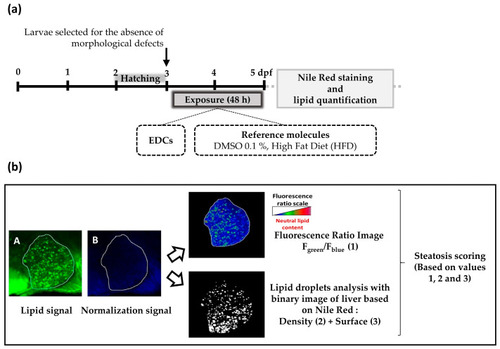Figure 1
- ID
- ZDB-FIG-230228-174
- Publication
- Le Mentec et al., 2023 - A New In Vivo Zebrafish Bioassay Evaluating Liver Steatosis Identifies DDE as a Steatogenic Endocrine Disruptor, Partly through SCD1 Regulation
- Other Figures
- All Figure Page
- Back to All Figure Page
|
Experimental design of the StAZ bioassay ( |

